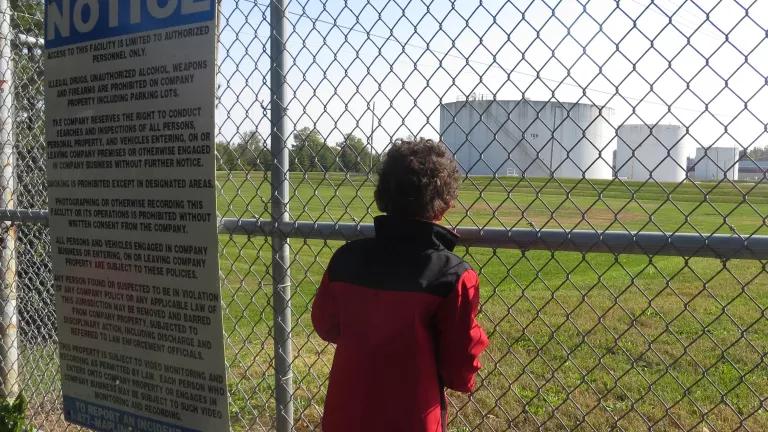New Papers Provide Tools for Health Protective Action
Two recently published science policy papers that I co-authored aim to advance health protective policies and practices regarding hazardous chemicals.

Elizabeth Crowe via ej4all.org
I am pleased to share two recently published science policy papers that I co-authored, to advance health protective policies and practices regarding hazardous chemicals. The two publications together—the Evaluation of Evidence paper and the Epidemiology Toolkit paper—are meant to be helpful for government regulatory and non-regulatory actions as well as private industry initiatives, to support health-protective policies and practices.
Evaluation of Evidence paper
Conducting Evaluations of Evidence That Are Transparent, Timely And Can Lead to Health-Protective Actions (free download here) presents case studies of a number of hazardous chemicals and agents, including: perfuorooctanoic acid (PFOA); Extremely Low Frequency – Electrical Magnetic Fields (ELF-EMF fields); the herbicide glyphosate found in Monsanto Bayer weedkiller products; and, Bisphenol A (BPA).
Co-authors present perspectives on the myriad reasons for divergent outcomes of evaluations, which has led to delayed and inadequate protection of the public’s health.
Tapping into the co-authors extensive working lifetimes of experience in science policy contexts, we recommend some strategies that can be used to overcome these barriers to health-protective actions, including:
- making better use of existing hazard and exposure data;
- setting timelines and deadlines for completing chemical assessments;
- and, minimizing the influence of financially conflicted interests.
Dr. Monica Unseld, PhD, MPH, noted, “As scientists, we are trained to create hypotheses, and we are also trained to reject hypotheses. The existing and traditional methods of evaluation are ineffective. Disproportionately-impacted communities are still getting sick and dying. We must try a new experiment. The authors have laid out problems and intervention points, thus making it easier for researchers and communities to try a new approach to save lives.”
Epidemiology Toolkit paper
A good companion article that I also was pleased to co-author, is the Toolkit for Detecting Misused Epidemiological Methods (free download here). It provides some specific tools that can be used to implement the above recommendations.
The ‘Epidemiology Toolkit’ provides tools to recognize and address the “repertoire of methods, techniques, arguments, and tactics that may be employed to manipulate science to… foment uncertainty, cast doubt, and mislead decision makers by seeding confusion about cause-and-effect relating to population health”. It has already been used by researchers in several journal publications, and we look forward to more applications in the future.
The Matter Is Urgent
The structural racism and classism that continues to pollute and poison low-income and communities of color must be addressed. Science and policies have repeatedly failed these Environmental Justice (EJ) communities. For example, a report by Coming Clean and the Environmental Justice Health Alliance for Chemical Policy Reform (EJHA) notes that “there are over 12,000 high-risk chemical facilities in America—and roughly 40% of U.S. residents live within three miles of one or more of them. That means more than 124 million people are living every day with the threat of chemical leaks, spills, and explosions that imperil their families’ health, safety, and ultimately, their lives. The people who live in these “Fenceline Zones” are disproportionately Black and Latino, and the poverty rate in these communities is much higher than the rest of America.” (see Life at the Fenceline)
Dr. Mark Mitchell, MD, MPH, a physician and co-author of the Evaluation of Evidence paper, warns that people are getting sick and dying every day from chemical exposure. “When I visit EJ communities, I find that people are disproportionately sick, poisoned by the toxics coming out of nearby smokestacks. It isn’t unusual to lose EJ leaders to these same causes”.
Learn More and Take Action
Please support the work of Coming Clean and its partners by reading about the Louisville Charter for Safer Chemicals, sharing it, and endorsing it online.
References
Conducting Evaluations of Evidence That Are Transparent, Timely And Can Lead to Health-Protective Actions (free download here). Co-authors: Nicholas Chartres, Jennifer B. Sass, David Gee, Simona A. Bălan, Linda Birnbaum, Vincent James Cogliano, Courtney Cooper, Kristi Pullen Fedinick, Roy M. Harrison, Marike Kolossa-Gehring, Daniele Mandrioli, Mark A. Mitchell, Susan L. Norris, Christopher J. Portier, Kurt Straif and Theo Vermeire
Toolkit for Detecting Misused Epidemiological Methods (free download here). Co-authors: Colin L. Soskolne, Shira Kramer, Juan Pablo Ramos-Bonilla, Daniele Mandrioli, Jennifer Sass, Michael Gochfeld, Carl F. Cranor, Shailesh Advani, Lisa A. Bero




